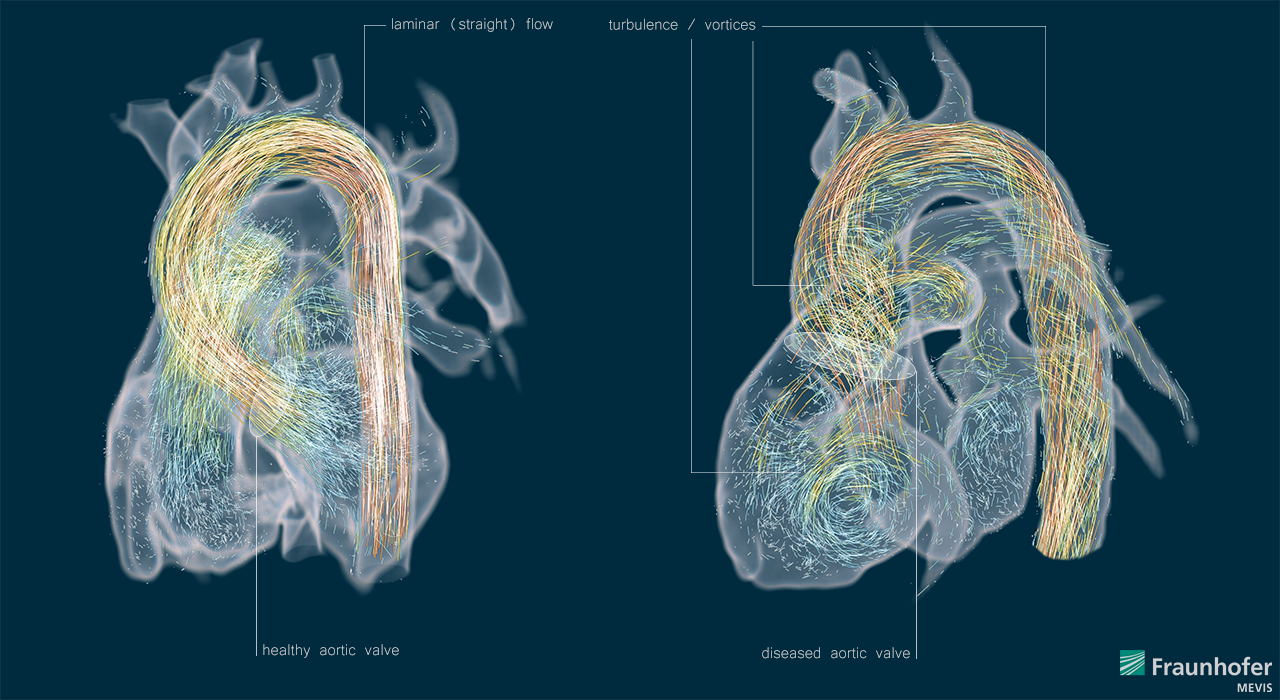Article on Model-Based Therapy Planning for Aortic Valve Replacement in nature.com
A study in ten patients with aortic valve replacement (AVR) indicates that model-based therapy planning is able to accurately predict post-operative haemodynamics after AVR.
The results of the study were recently published in the Scientific Reports of nature.com by Kelm et al. from the German Heart Center and the Institute for Computational and Imaging Science in Cardiovascular Medicine at the Charité in Berlin. The article with title „Model-based therapy planning allows prediction of haemodynamic outcome after AVR“ was co-authored by scientists of the EC-funded project CARDIOPROOF including Anja Hennemuth, Hanieh Mirzaee and Mathias Neugebauer from Fraunhofer MEVIS. The software MEVISFlow was used for data extraction from three-dimensional velocity encoded cine MRI (4D VEC MRI) in order to use the personalized three-dimensional left ventricular outflow tract inflow velocity profile as inlet boundary condition for flow modelling.
Abstract: Optimizing treatment planning is essential for advances in patient care and outcomes. Precisely tailored therapy for each patient remains a yearned-for goal. Cardiovascular modelling has the potential to simulate and predict the functional response before the actual intervention is performed. The objective of this study was to proof the validity of model-based prediction of haemodynamic outcome after AVR. In a prospective study design virtual (model-based) treatment of the valve and the surrounding vasculature were performed alongside the actual surgical procedure (control group). The resulting predictions of anatomic and haemodynamic outcome based on information from magnetic resonance imaging before the procedure were compared to post-operative imaging assessment of the surgical control group in ten patients. Predicted vs. post-operative peak velocities across the valve were comparable. In wall shear stress and secondary flow degree significant linear correlations were found between predicted and post-operative outcomes. Between groups blood flow patterns showed good agreement. Model-based therapy planning is able to accurately predict post-operative haemodynamics after AVR. These validated virtual treatment procedures open up promising opportunities for individually targeted interventions.
 Fraunhofer Institute for Digital Medicine MEVIS
Fraunhofer Institute for Digital Medicine MEVIS